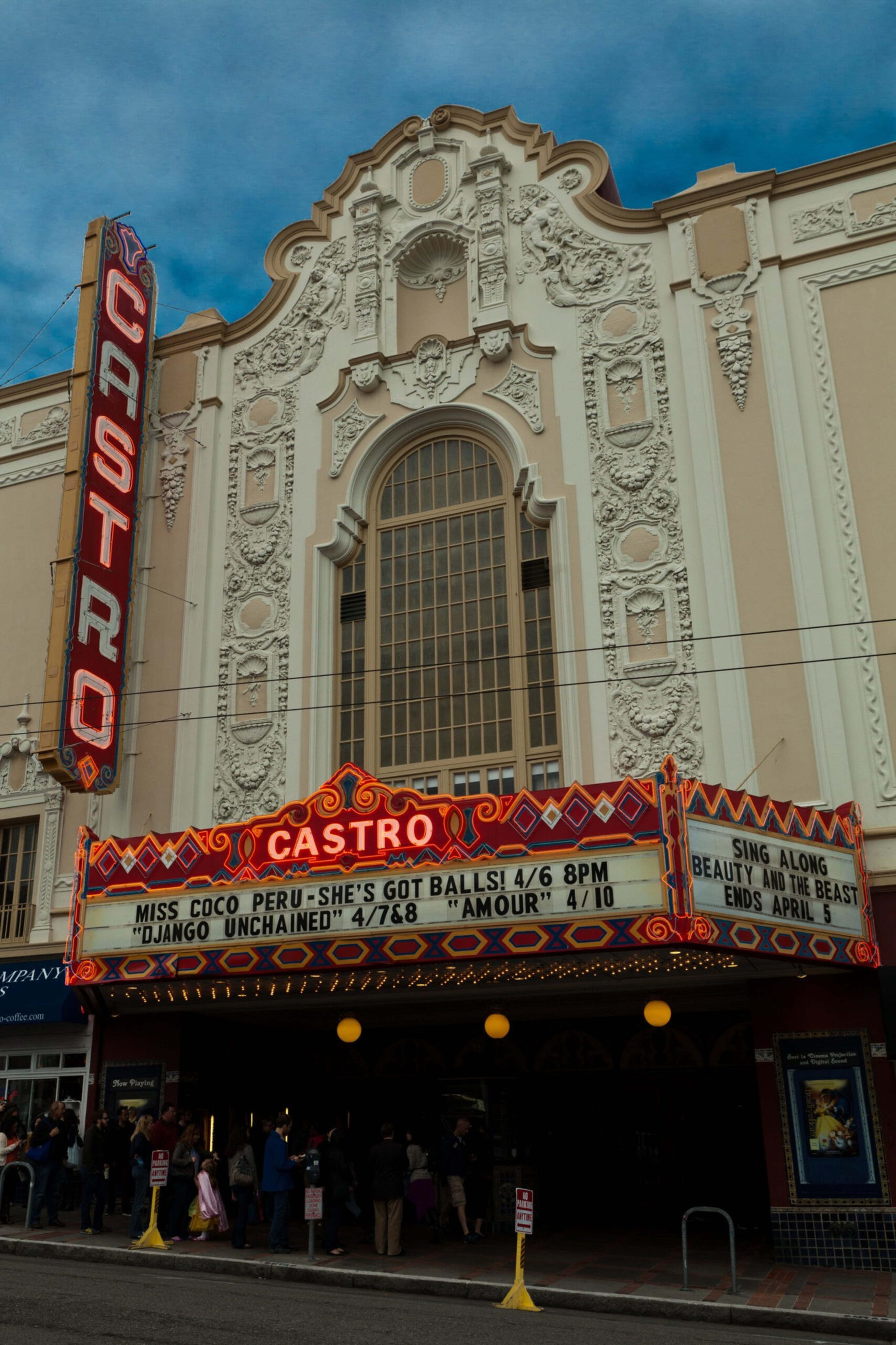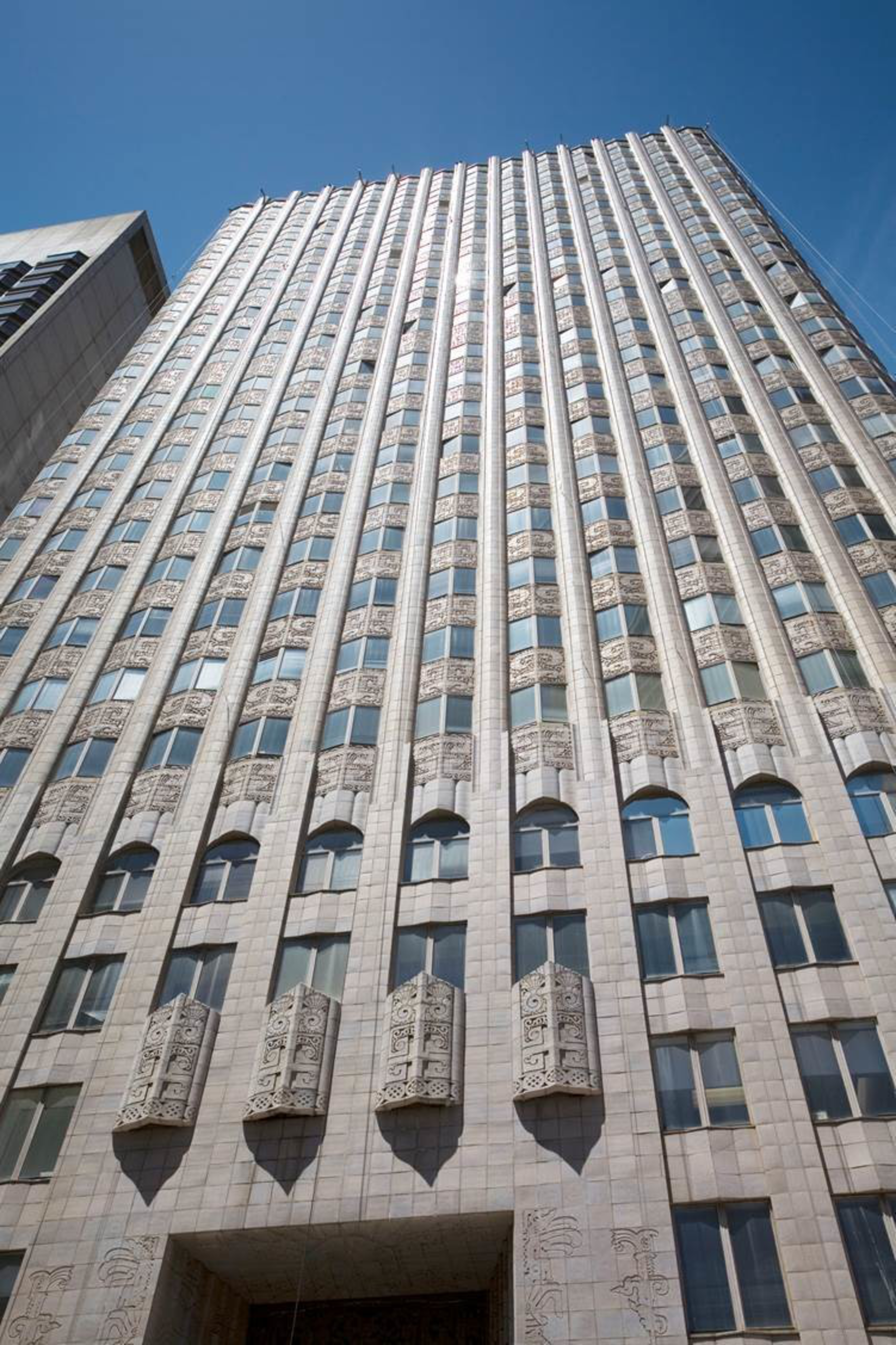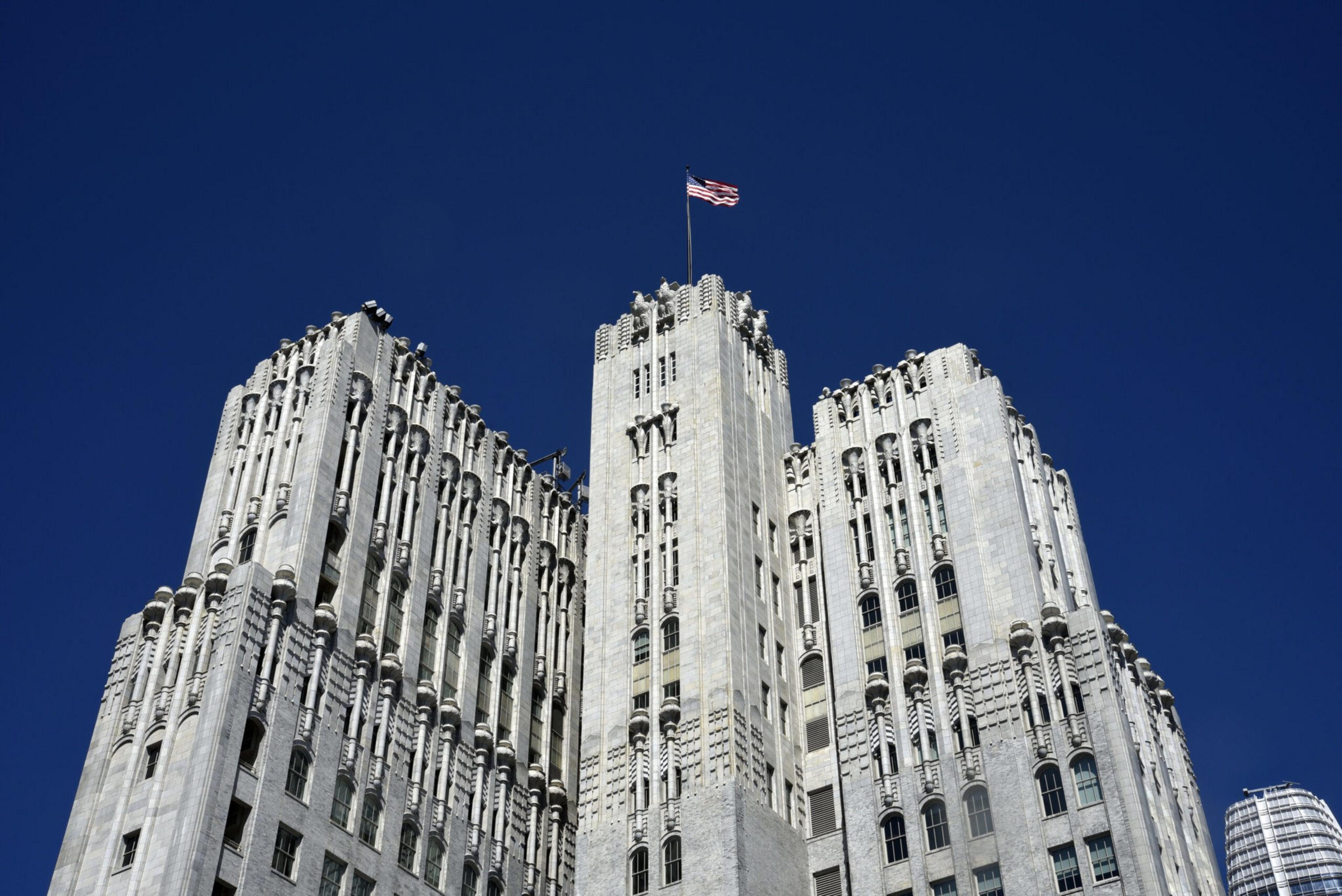If you’ve enjoyed a film at the Castro Theatre, taken a class at City College of San Francisco, shopped at Macy’s on Union Square or crossed the Bay Bridge—you’ve been in the presence of Timothy Pflueger (opens in new tab).
You might not recognize his name, but the architect whose fingerprints are everywhere across our skyline had his 130th birthday on Monday, and we should have thrown him a party.
It’s not only his sheer talent that makes Pflueger unique—his ability to churn out beautiful buildings in styles from Spanish Baroque to Art Deco, Beaux Arts to Neoclassical—but also his deep connection to artists. Named President of the San Francisco Art Association in 1932, Pflueger focused on artistry as much as architecture and his interiors were just as important, and striking, as his exteriors.
“Something that really distinguished Pflueger from some of his contemporaries was his involvement in the local arts community,” said Christopher VerPlanck, a San Francisco architectural historian. “Diego Rivera was a close friend of his.”
We have Pflueger to thank for bringing Diego Rivera to the city—he invited the renowned Mexican artist to the Golden Gate International Exposition in 1940—and establishing a collaboration that left San Franciscans with three of the Mexican painter’s murals.
Working in the wake of the 1906 earthquake, Pflueger had a rare opportunity to remake the city’s skyline at a time when builders were in high demand. He rose to the apex of architectural fame despite growing up with five brothers in the working class Mission with no college degree.

“He never went to any major architectural school,” said Therese Poletti, author of Art Deco San Francisco: The Architecture of Timothy Pflueger. “He learned by doing.”
Pflueger’s creativity and innovation were born from his work ethic. “He was married to his job,” said Pflueger’s great nephew Tom Pflueger, noting that the famous architect never got hitched to a partner. Tom Pflueger remarked on the care and beauty his great uncle put into everything, down to the detail in holiday party invitations he designed—with an invite for Ansel Adams, another artist in Pflueger’s circle.
I had the opportunity to experience the serendipity between Rivera and Pflueger in a visceral way when viewing the Pan American Unity mural on display in SFMOMA’s Roberts Family Gallery. Mural savant Willie Maynez pointed out that the Pflueger’s iconic “Telephone Building” at 140 New Montgomery Street, depicted in the left hand side of the mural, was just outside the plate glass window of the gallery.
I’d noticed the building before, but its majesty never fully sank in until that moment: the setbacks, the zigzags, the elegant gray. Pflueger had an epiphany for the high-rise while hiking near Lake Tahoe by Fallen Leaf Lake, “inspired by the clean and uncluttered lines of Sierra granite,” Poletti writes in her book.
Constructed in 1925, the skyscraper represented the telecommunications company it housed with a sculpted bell above the entry and eight giant terracotta eagles perched on the corners. The muted gray exterior contrasts with the inside, with its black marble, gold metal work and a deep-red ceiling that includes depictions of the Chinese mythological creature fenghuang, a bird of good fortune. It’s a gesture toward San Francisco’s signature bird, the Phoenix rising from the ashes—also symbolic of Pflueger himself and his rise to fame from humble beginnings.
In the city alone, Pflueger gave us three theaters (the Castro, the Alhambra, the El Rey), numerous schools, a department store, the Pacific Stock Exchange and his famous skyscrapers. He also gave the city some of its best cocktail lounges: the Cirque Room in the Fairmont Hotel, the panoramic bar at Top of the Mark, the patent leather bar at the St. Francis Hotel and Bimbo’s 365 Club.
Many consider the soaring marvel of 450 Sutter Street, also depicted in Rivera’s mural and completed in 1929, as Pflueger’s most iconic San Francisco skyscraper. “The lobby of that building is just incredible,” said Christopher VerPlanck, architectural historian. “It looks like Mayan funerary architecture from 300 AD.”

When tasked with making a medical building for doctors that included a 1,000-spot parking garage, Pflueger covered it in gold frieze and offered up a neo-Mayan Deco masterpiece. “He made a trip to your dentist like a pilgrimage,” said Woody LaBounty, San Francisco historian.
Starting small and making something big; drawing in creative influences from all over the world; involving artists at every stage—in many ways, Pflueger represents San Francisco itself.
“He was totally aligned with where the country was,” said LaBounty. “He was a man that hit at the right time.”
Correction: A previous version of this story misidentified the Roberts Family Gallery.
